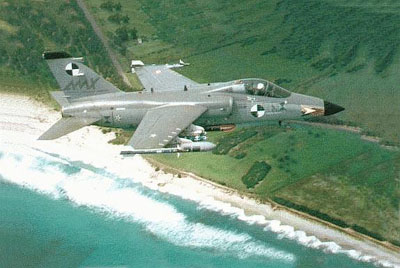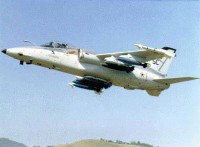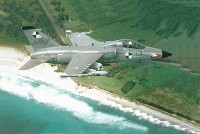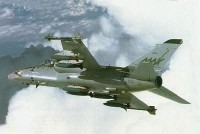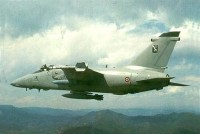Global Aircraft -- AMX
|
Aviation Center
US Attack
US Bombers
US Cargo
US Fighters
US Helicopters
US Patrol/Pursuit
US Reconnaissance
US Tankers
US Trainers
US UAV's
US X Planes
Orbiter Vehicles
WWI Aircraft
WWII Aircraft
Airbus
Antonov
Boeing
Dassault
Ilyushin
Kamov
MiG
Mil
Saab
Sukhoi
Tupolev
Yakovlev
Joint/Rest of World
Entertainment Center
Members Center
New Technologies
Contact Us
Extra Navigation
GAC Engine
AMX Specifications
AMX Features
The AMX International AMX "Ghibli" was designed to serve as a surface attack aircraft for battlefield interdiction, close air support and reconnaissance missions. It is built by the AMX International joint venture, and is designated the A-1 in the Brazilian Air Force.
The AMX is capable of operating at high subsonic speed and low altitude, by day or night, and if necessary, from bases with poorly equipped or damaged runways. Low IR signature and reduced radar equivalent cross-section help prevent detection, while low vulnerability of structure and systems aid survivability. Integrated ECM, air-to-air missiles and nose-mounted guns provide self-defence capabilities.
AMX Background
In 1977, the Italian Air Force issued a requirement for a strike fighter to replace its Aeritalia G.91 and some of its F-104 Starfighters. Rather than competing for the contract, Aeritalia (now Alenia Aeronautica) and Aermacchi agreed to make a joint proposal, as both firms had been considering the development of a similar class of aircraft for some years. Development work began in April 1978.
In March 1981, the Italian and Brazilian governments agreed on joint requirements for the aircraft, and Embraer was invited to join the partnership in July. The first prototype flew on May 15 1984. Although it was lost on its fifth flight (killing its pilot), the test programme progressed reasonably smoothly otherwise. Production started by mid-1986, with the first examples delivered to the Italian and Brazilian air forces in 1989. Since then, some 200 AMXs have been built. Italian AMX squadrons flew 252 combat sorties over Kosovo as part of Operation Allied Force, without a single loss. | ||||||||||||||||||||||||||||||||||||||||||||||
